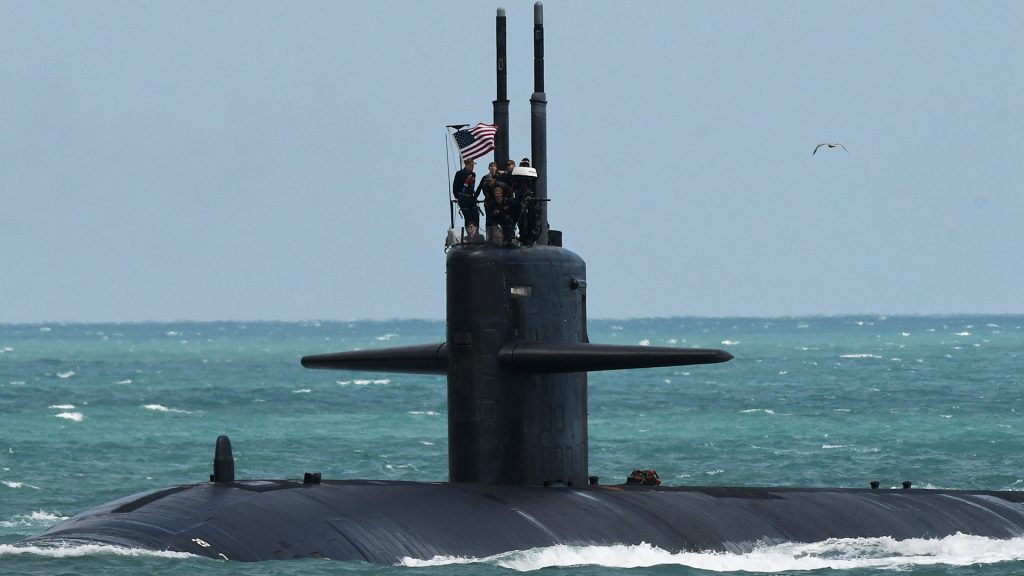Pentagon questions AUKUS Submarine deal as costs, delays mount

The Trump administration is reviewing the AUKUS security pact, a cornerstone trilateral agreement signed in 2021, aimed at countering China’s growing influence in the Indo-Pacific. The pact’s centerpiece — a plan to help Australia build a fleet of nuclear-powered submarines — has drawn heavy investment and sparked geopolitical tensions.
Now, U.S. allies and defense officials are watching closely to see whether the review signals a potential pullback from one of America’s most ambitious military partnerships.
What does AUKUS include?
The AUKUS agreement involves the United States, the United Kingdom and Australia. Under its first pillar, Australia would receive nuclear-powered submarines built with U.S. and U.K. technology over the next 30 years, with a price tag expected to exceed $245 billion.
However, the Virginia-class submarine program, the first phase of the pact, has faced persistent delays and major cost overruns. A 2024 Congressional estimate, cited by the Pentagon, shows that the Virginia-class submarines are already two years behind schedule and $17 billion over budget through 2030.
The second pillar involves advanced defense technology cooperation, including AI, cyber capabilities and undersea drones.
How is China responding?
Beijing has strongly opposed AUKUS since its inception. Chinese officials say the pact poses a threat to regional stability and could spark a new arms race. Recent Chinese military moves have heightened the urgency of the debate. For the first time, two Chinese aircraft carriers have operated together in the Pacific, advancing beyond the second island chain, which includes U.S. territory such as Guam.
Why is the pact under review?
The Trump administration says it is reviewing whether AUKUS aligns with the president’s “America First agenda.” Defense Secretary Pete Hegseth has emphasized the need for “the highest readiness of our service members,” stronger allied burden-sharing and a defense industrial base that “meets our needs.”
Defense Undersecretary Elbridge Colby, a key architect of the review, has warned it would be “crazy to have fewer SSNs in the right place and time,” reflecting concerns that the pact could overextend U.S. submarine forces.
What do US allies and Republicans say?
Republicans have generally backed AUKUS. In April, Rep. Michael McCaul, R-Texas, called the pact “the one bright spot” in former President Joe Biden’s foreign policy record. National security hawks see it as vital to maintaining Western technological superiority and deterrence in the Indo-Pacific.
Still, concerns about U.S. industrial capacity are driving the review. In a June 12 statement, former Australian Prime Minister Scott Morrison said the Pentagon’s examination is a “departmental review, not a policy decision,” and should not be overinterpreted. He emphasized that it centers on submarine production shortfalls, a known challenge for the U.S. Navy, and reaffirmed Australia’s continued commitment.
Are the UK and Australia worried?
Britain has taken a similar stance. A U.K. government statement released last month described the U.S. review as understandable and noted that the U.K. had conducted its assessment in 2024 following a change in government. “The UK will continue to work closely with the U.S. and Australia at all levels,” the statement read.
The U.S. ambassador to London recently reaffirmed Washington’s backing for AUKUS, but Pentagon leaders have not publicly ruled out adjustments. That ambiguity has unsettled allies, who fear a U.S. retreat would signal diminished commitment amid growing regional threats.
What happens if the US pulls out?
If the U.S. scales back or abandons the pact, defense experts warn it would deliver a major blow to Australia’s long-term military strategy. According to Reuters, Canberra has already begun reshaping its defense posture in response to the AUKUS agreement, including reallocating resources away from traditional forces toward long-range missiles, drones, and a nuclear-powered submarine fleet.
A cancellation or major revision would leave a gap at the center of Australia’s future naval capabilities, just as tensions rise in the Indo-Pacific and South China Sea over China’s growing military ambitions. Earlier this year, Australia made a A$500 million (approximately $325 million) down payment to the U.S. for its first AUKUS submarine order, signaling a significant investment in the program.
More broadly, a U.S. retreat could shake allied trust and embolden Beijing, raising doubts about Washington’s long-term reliability as a security partner in the region.
Still, work on AUKUS continues. Australian personnel are already contributing to U.S. submarine construction under Pillar I, and the joint development of a next-generation “AUKUS-class” submarine remains underway.





